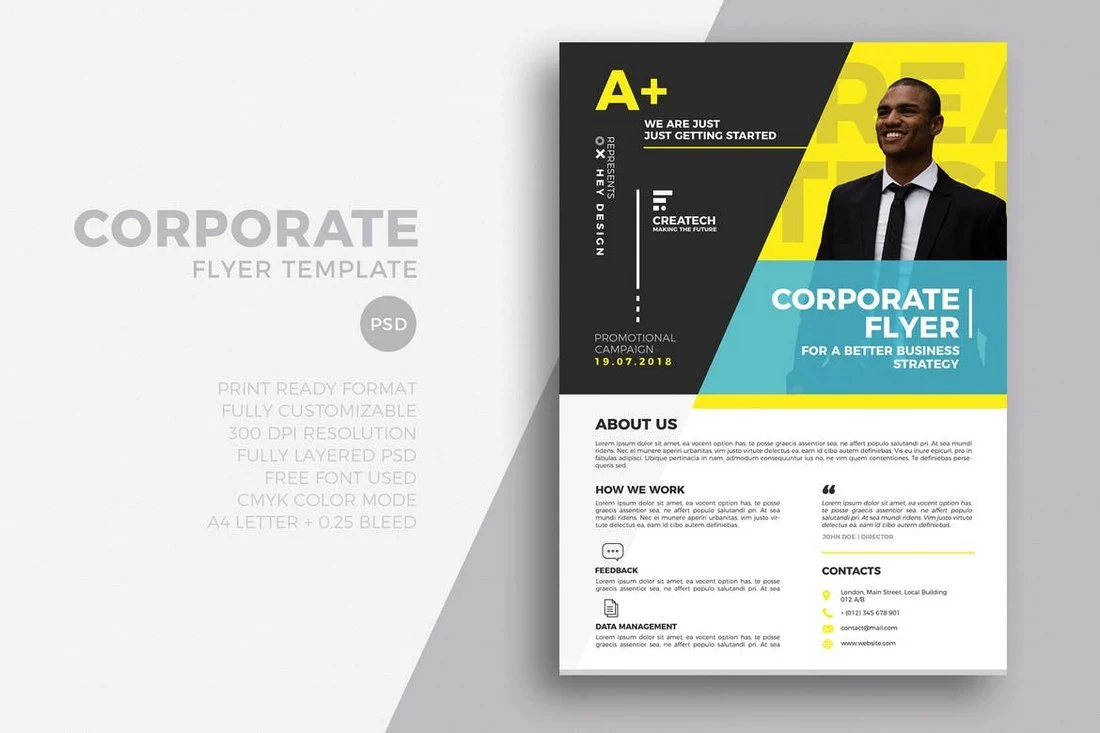Flyers are one of the most effective marketing tools you’ll find. They’re simple, easy to use, and can reach a wide audience. You don’t need any special skills or experience to create a good flyer, and they’re extremely inexpensive compared to other forms of advertising.
If you’ve got an idea for how to use flyers in your business, this guide will show you how! In this post, we’ll cover everything from picking out paper types and fonts to designing layouts that attract attention while still being informative—and all with only a few dollars in materials costs.
Use A Distinctive Logo
A strong logo is essential to the success of your marketing campaign. It should be easy to read, legible and consistent. Your logo should also be unique and memorable so that people recognize it when they see it.
If you don’t have a logo yet, you can use an existing one from another company as long as it doesn’t infringe on anyone else’s copyright or trademark rights (for example if someone else has copyrighted their name).
In addition to using your own logo in Flyers: Make sure that all text is legible by using high contrast colors like black-on-white or white-on-black; make sure there are no shadows or other distractions in the image; avoid using clip art images unless they’re freebies in which case make sure they’re not too busy either!
Choose Easy-to-read Typefaces
The look of your flyer will depend on the typeface you choose, so it’s important to consider how this will reflect on your brand. When choosing a typeface for flyers, keep the following in mind:
- Choose one that is easy on the eyes—this can help make reading them easier and more enjoyable for customers.
- Use a serif font over sans serif fonts when possible (sans serifs are less readable). Serifs provide more contrast between letters and make text harder to read. Sans serif is commonly used because they’re easier to read at small sizes; however, if you need a large print run or want something unique, using a custom-designed sans serif font might be worth looking into!
- Avoid using too many different fonts on one page by staying within two different styles per page instead of three or four-five different ones! This way there won’t be too much confusion about what words belong together visually and verbally throughout your entire document.”
Use Short Phrases And Bullet Points
Bullet points are a great way to make your flyer more engaging. They can be used in place of text, and they make it easy for the reader to quickly scan through the page and get your message across.
- Use bullet points for key points that you want your audience to remember. If you want people to remember what type of food is best for them (or if you’re trying to sell them on buying organic), then use bullet points like “Organic vs Conventional: Which Is Better?” or even better yet – just put these two words together!
- Make sure that each point has an example or illustration so that there’s no confusion about what you mean by “organic” or “conventional.” You could even throw in some color here if it helps further drive home the point!
Pick The Right Paper For Your Message
There are many papers to choose from. You can use a thin, lightweight paper that you’ll have to fold yourself or one of our pre-made flyers which will be sturdier and easier to read. If you want your message to feel more like an advertisement than an informative piece of content, then consider using thicker cardstock instead of standard printer paper. The thickness of the material may be important depending on what kind of image you want to include in your design—a photo might work better if it’s printed on thick stock while text needs something thinner for legibility purposes (think about how hard it would be for someone who isn’t familiar with your business).
In general, though, try not to go too crazy when choosing materials because they all have their strengths and weaknesses as well as different applications so don’t just blindly pick whatever looks good!
Design For The Size And Shape Of Your Flyer
When designing your flyer, you should consider the size and shape of your flyer. The most important thing to remember is that people’s attention spans are getting shorter by the day. You don’t want to make it too long, nor do you want to make it too short or wide (or thick). It should also fit comfortably in their hands so they can read it easily without having to struggle with how much space there is between lines or where two pages meet up.
The best way I’ve found for designing flyers is going through each section and making sure everything fits together properly before moving on to another step in designing my own business cards!
Include A Call To Action
Include a call to action on your flyer. A call to action is simply a message that tells people what you want them to do next, like “call me” or “visit my website.” If you’re running a business, this can be useful for getting people in the door and encouraging them to buy something from you. On your flyer, include text like “Call Me,” “Check Out My Website,” or any other relevant message that will get the point across without being too vague or repetitive (e.g., if someone calls you asking about one of your services). You don’t necessarily need it on every single page; sometimes just having one at the end of an email can work wonders!
There are many ways of making this stand out from other text: color coding (e.g., red), bolding/underlining/italics, etc…
Make Your Flyer Informative But Not Too Busy
When you’re designing your flyer, think about how people will see it. You don’t want to make the text so small that they have trouble reading it or so big that they can’t fit it all on one sheet of paper. In general, aim for something between 6 and 8-point font size—that’s about 150 to 200 words per line.
You’ll also want to consider where in your space (e-mail inbox/home page) you’ll be putting up this flyer and what page layout works best with what kind of content (i.e. if there are lots going on already). If possible, opt for something simple with minimal distractions like graphics or images; otherwise, people may spend more time looking at other parts of your site instead!
Conclusion
Flyers are an easy way to spread the word about what you’re selling. They don’t need to be fancy or complicated, but they do need to be effective.
Flyers can be printed in bulk and distributed across a wide area, which means that they’re scalable. You don’t need to hire someone with graphic design skills if your flyer is going on display at several locations throughout town—you can even print flyers on simple paper and put them in plastic bags!
We hope that it has given you some ideas on what kinds of things are important in order for your flyer to be successful. And remember: there are many different ways to use flyers besides just advertising! You can also use them as giveaways at events like trade shows or conferences where you want visitors’ attention focused elsewhere (like on merchandise).



